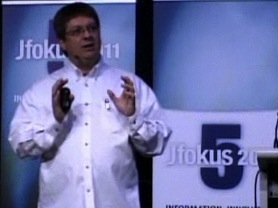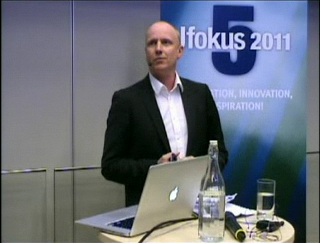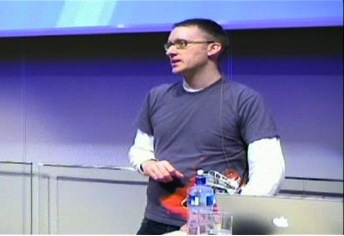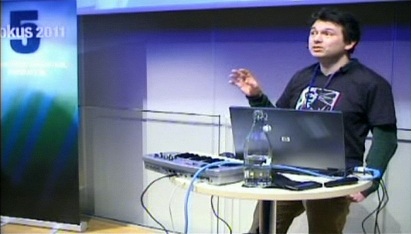
Visualizations for Code Metrics
Neal Ford, ThoughtWorksJudicious use of metrics improves the quality of your code. But interpreting metrics presents a challenge. You have a list of numbers for a project - what does it mean? And what does it tell me about the health of the project overall? This sessions shows how to produce visualizations for software metrics, making them easier to understand.

Architecture remakes with DDD, true stories from the wild
Jimmy Nilsson, factor10Applications have a tendency of becoming harder and harder to maintain over time. In my experience, DDD is often used for describing the new target architecture. In this presentation we have distilled a set of common key possibilities in such situations, both how they can be achieved and what benefit they will give.

JRuby + Rails = Awesome Java Web Framework!
Nick Sieger, Engine YardWhen looking for a productive, innovative web framework for a Java environment, who says it has to use Java the language? Rails is the framework that sparked a new wave of innovation in web development, and it's available on the JVM, via JRuby. With Rails 3 allows you to mix and match components, making it easier to use existing Java code.

An interactive approach to load testing with JavaFX, Groovy and OSGi
Ole Lensmar, eviware software abThis presentation will start with a short demo of a novel distributed load-testing tool, loadUI, that makes load-testing into something interactive and fun by providing an extremely "playful" javaFX interface on top of a groovy-centered component framework. The demo will be followed by an overview of utilized technologies and of the groovy DSL used for creating components.

NoSQL consistency models and transactional semantics
Roger Bodamer, 10genNoSQL technologies often use different models for failover, high availability, and multi-data center support than traditional databases. In this session we will review how traditional database and how NoSQL sometimes offers a different approach to these problems.



























